Rosé Color
- July 14, 2025
For us, the hardest part of producing Rosé is the color. It seems like every year the color is slightly different than the last. That is because the color comes from the skins.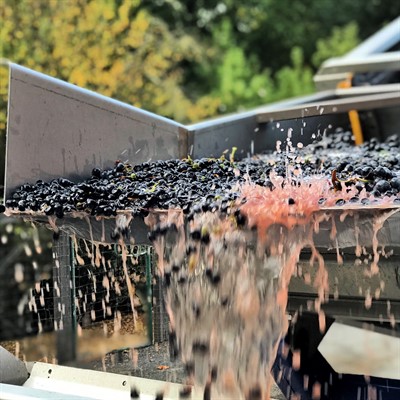 When we first began making Rosé, we were not planning to produce a Rosé. We were trying to intensify the color of our Malbec red wine, so we drained 15% of the juice from the picking bin before we put the Malbec grapes into the fermenters. Called “saignée” (which means to bleed) by the French, this technique darkens the overall color of the red wine because you ferment 85% of the juice with 100% of the skins.
When we first began making Rosé, we were not planning to produce a Rosé. We were trying to intensify the color of our Malbec red wine, so we drained 15% of the juice from the picking bin before we put the Malbec grapes into the fermenters. Called “saignée” (which means to bleed) by the French, this technique darkens the overall color of the red wine because you ferment 85% of the juice with 100% of the skins. 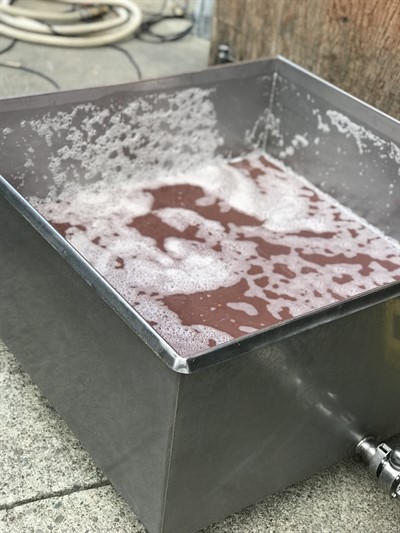 Originally, we kept a barrel’s worth of the saignée juice and sold the rest to another winery who incorporated it into their red wine. We fermented that juice and then gave it away as Christmas presents the next December. After a few years, in 2011, we decided to make our own Rosé commercially.
Originally, we kept a barrel’s worth of the saignée juice and sold the rest to another winery who incorporated it into their red wine. We fermented that juice and then gave it away as Christmas presents the next December. After a few years, in 2011, we decided to make our own Rosé commercially.
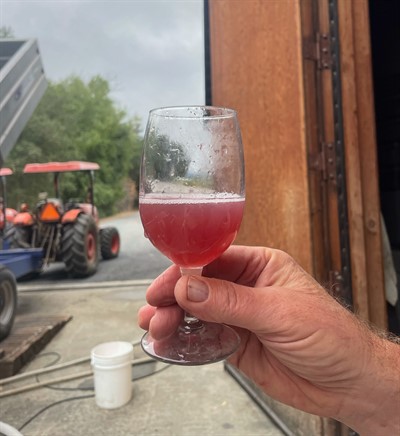 The color of the saignée juice is typically dark pink because the grapes are being picked for red wine…the grapes are riper, the skins are thinner, and they release color more readily. Our first few vintages of Rosé were quite dark because we used only saignée juice.
The color of the saignée juice is typically dark pink because the grapes are being picked for red wine…the grapes are riper, the skins are thinner, and they release color more readily. Our first few vintages of Rosé were quite dark because we used only saignée juice. 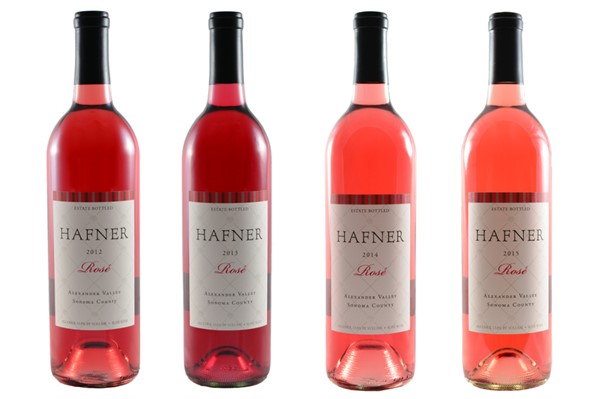
As our production grew and we honed the style of Rosé we wanted, we began to utilize the other technique of producing Rosé which is known as “direct to press” and hence, we picked the grapes as though we were making white wine. Essentially, the Malbec grapes picked for direct to press are lower in sugar, the flavors more delicate and the color, less intense. Blending the saignée and direct to press wines allowed us to produce a crisper, brighter flavored Rosé similar to Provencal Rosés that was also lighter in color. The style of our first Rosé in 2011 was heavier and had more tannin structure. Even with the color differences in the past few years, we have found that the aromas, flavors and structure have remained consistent.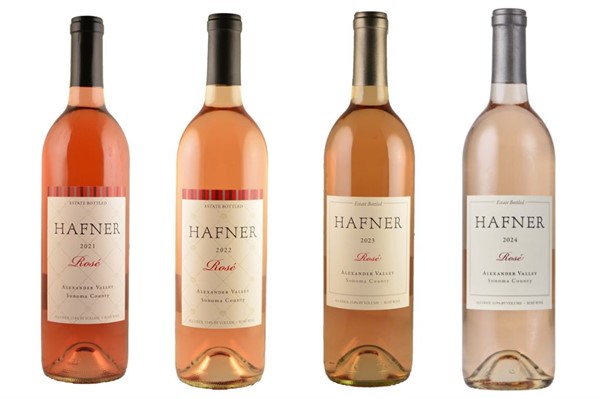
Another factor affecting the wine’s hue occurs during fermentation. As the juice ferments and becomes wine, some of the color is lost. Technically speaking, the anthocyanins (the source of color in red wines) are absorbed by the yeast during fermentation and the color becomes less intense which makes it almost impossible at harvest to gauge what the final hue of the Rosé wine will be.
Our goal is to produce a Rosé that is fresh, bright, fruit-driven with notes of watermelon, violets and powdered candies. Consistency in aromas, flavors, body and texture is our primary objective. When we have competitor tastings of Rosés, the wines can vary in color from pale straw to dark pink. We try not to be influenced by the color of the wine we are tasting; in fact, at UC Davis, they taste in black glasses for just that reason. During the tasting, our focus on the components of the wine, not the color…is it fruit-forward, well-balanced with a lively finish? We also taste verticals of our Rosé to ensure that we are producing wines that are consistent from year to year which is our ultimate goal.
One of the benefits of being in close contact with our patrons is that we hear from them and are grateful for their questions. This blog came as a result of a few patron questions about Rosé, how it is produced and the color. If you have questions about our wines, vineyard practices or sustainable efforts, email us. We’d love to hear from you.



